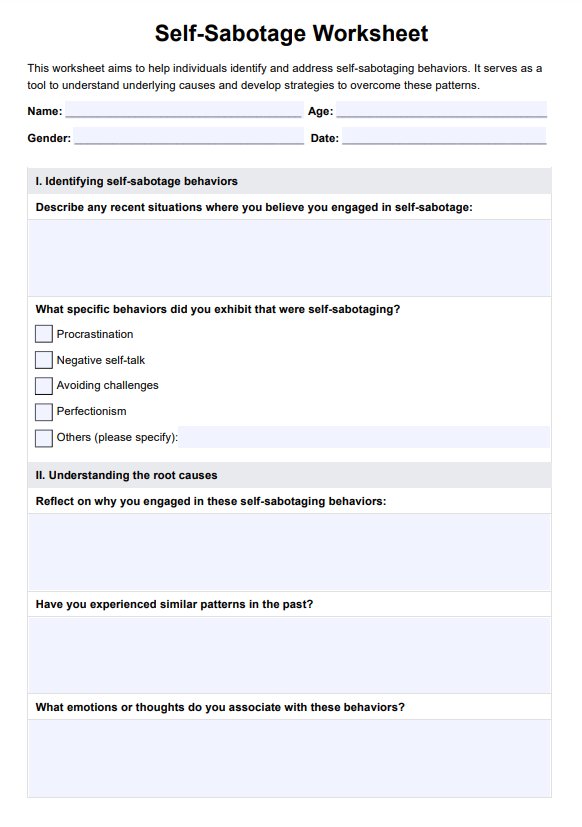Self-sabotage refers to behaviors or thought patterns that undermine an individual’s goals or well-being, often stemming from subconscious fears or low self-esteem.

Printable Self-Sabotage Worksheet
Use our Self-Sabotage Worksheet: an essential tool for mental health professionals to guide clients in overcoming subconscious barriers to success and well-being.
Printable Self-Sabotage Worksheet Template
Commonly asked questions
Self-sabotaging patterns include habits such as procrastination, setting unrealistic goals, overcommitting, negative self-talk, and avoiding opportunities out of fear of failure. These behaviors hinder progress and reinforce self-doubt.
Self-sabotaging actions are often unintentional behaviors that hinder progress, such as procrastination or avoidance, whereas self-destructive behaviors are more severe, deliberate actions that cause harm, like substance abuse or self-injury. Both can stem from underlying emotional or psychological issues.
EHR and practice management software
Get started for free
*No credit card required
Free
$0/usd
Unlimited clients
Telehealth
1GB of storage
Client portal text
Automated billing and online payments











